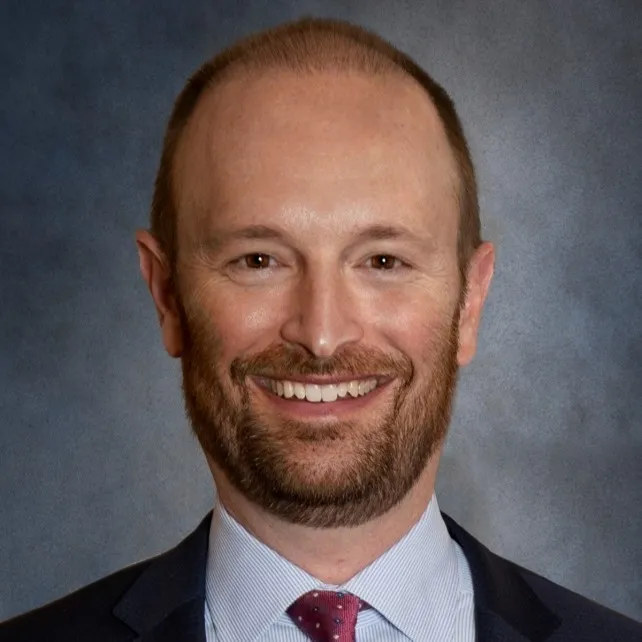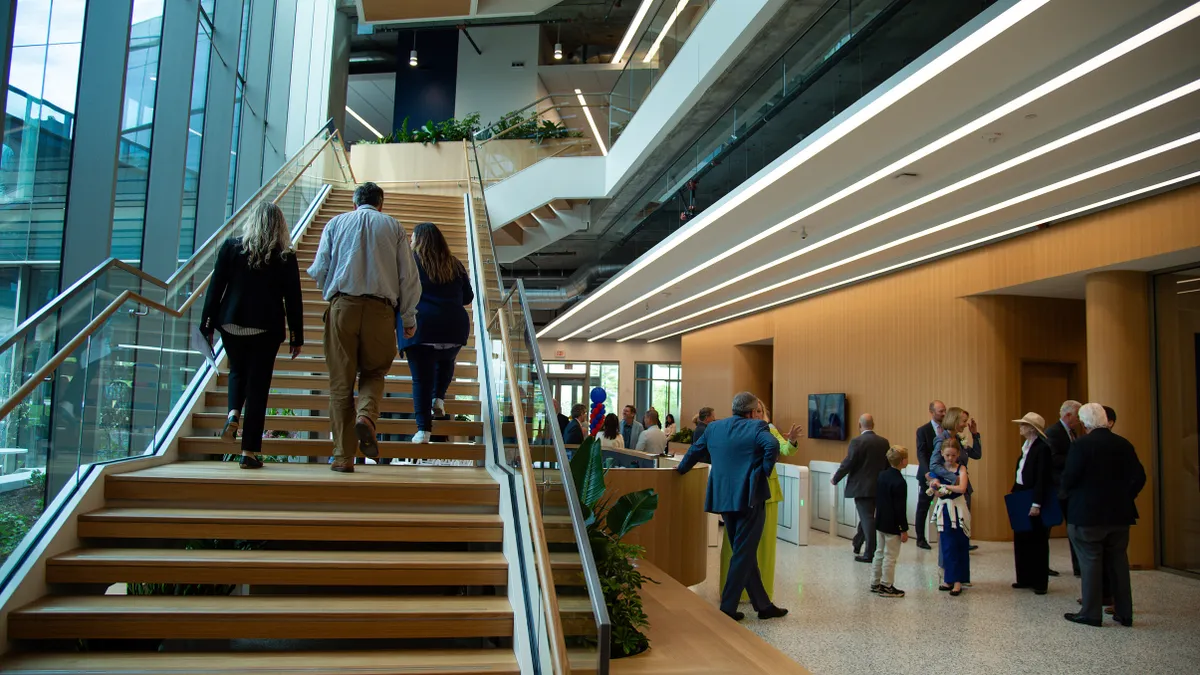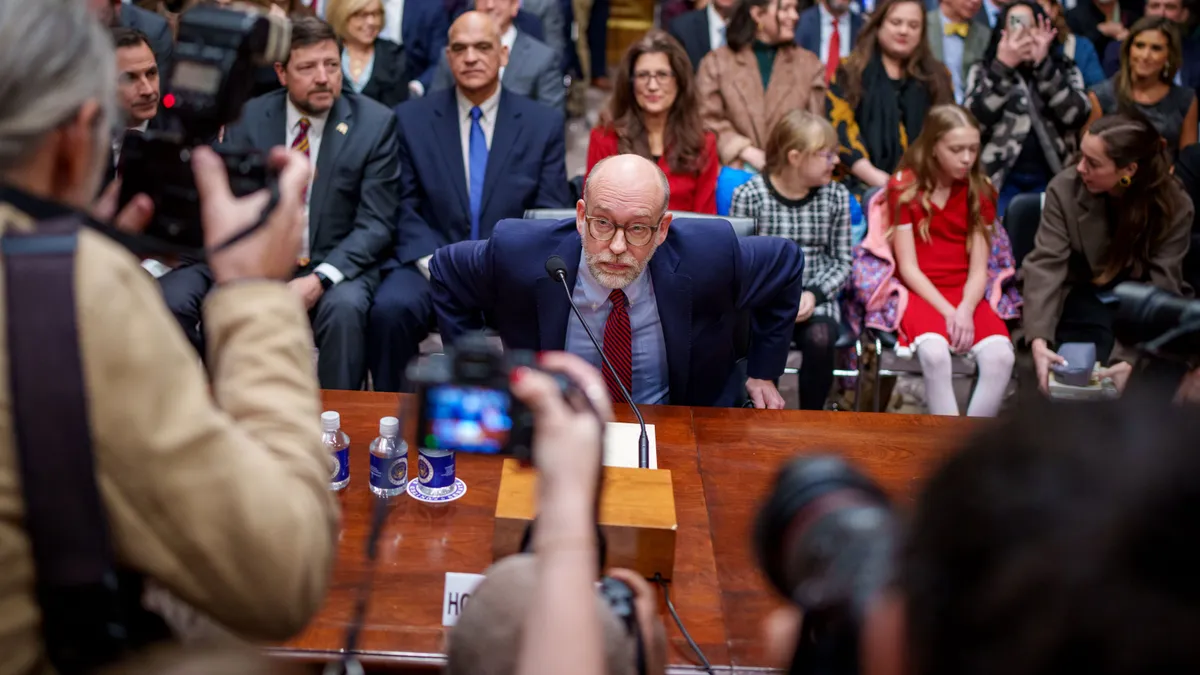Creve Coeur, Missouri-based First Bank is sharpening its focus on serving family-owned and privately held businesses across its footprint, including by expanding into Texas this year.
The lender, family-owned itself, has about $6.5 billion in assets and 80 branches. First Bank operates in Missouri, Illinois and California, with mortgage production offices in the Kansas City area.
First Bank, which has about 850 employees, is leaning on its “Goldilocks size,” which affords it enough scale for sufficient resources and technology needs, and the ability to cultivate close connections among small and midsize clients, bankers and leadership, asserted Mike Dierberg, the bank’s board chairman. First Bank’s privately held status plays into that, since family-owned clients see that benefit in the bank, Dierberg and CEO Mikel Williamson said during a recent interview.

Prior to the Great Recession, First Bank was “kind of your typical diversified community bank,” said Dierberg, who represents the fourth generation of family ownership of the bank. Since then, the bank has sought to zero in on serving family-owned and other privately held businesses.
That’s a segment the lender sees as a growth driver, as the number of U.S. small businesses has soared, noted Williamson, who took the CEO role at the bank last November.

“A lot of your bigger banks are really focusing on the mass market — being on every corner, being all things to all people, larger branches, and more of a generalized product offering,” Williamson said. “There are some banks out there doing what we do, and they're doing an OK job, but they're not doing a great job and they're not in our markets. It's a place where relationship still matters, and that requires investment and development over time.”
Although First Bank serves consumers, it’s not an area where the bank expects to take market share. The largest banks have “a ubiquitous brand” that allows them to succeed with the mass market consumer, “in ways that’s a little more challenging for a bank like ourselves,” Dierberg said.
In relationship banking, however, personal ties remain important to small and midsize businesses and affluent clients. “That is something we can really succeed and thrive in, because of the size of the company,” Dierberg said.
Smaller banks with trusted client relationships stand to gain in the current competitive environment, according to Nikhil Lele, global and Americas consumer banking leader at consulting firm EY, because consumers are more interested in a small bank expanding its reach to offer more products or services than a large bank, provided the small bank creates fluid digital interactions and service experiences are positive.
About 60% of First Bank’s business comes from California, Dierberg said. That’s primarily family-owned and privately held business banking, as well as commercial.
The bank declined to identify how much of its overall business mix the privately held and family-owned business banking segment represents, or what the bank aims to grow it to in the next two years, but Williamson said the lender aims “to grow significantly” in that segment.
To fuel this effort, the bank is betting on its new four-story, 87,000-square-foot headquarters in the St. Louis suburb, which executives said is designed to appeal to both employees and clients. The $40 million building, which opened in May, better accounts for hybrid work and features more outdoor space, executives said.
“We've got this atmosphere [where] we can really entertain here on a big scale, or we can bring it right down to the selected experts that our customers might need for specific problem solving,” Williamson said.
As part of its focus on privately held businesses, First Bank offers webinars and seminars with information geared toward family-owned business clients. With client relationships in mind, retention is “a high priority” for First Bank, Williamson said, and the bank is hiring in its wealth, family-owned and privately held businesses and commercial banking segments.
“Being able to bring that expertise to the table in a banker who’s well trained, understands their business as well as understands the financial system — when you marry those two things up, it creates a win-win for the company and the bank,” Williamson said.














